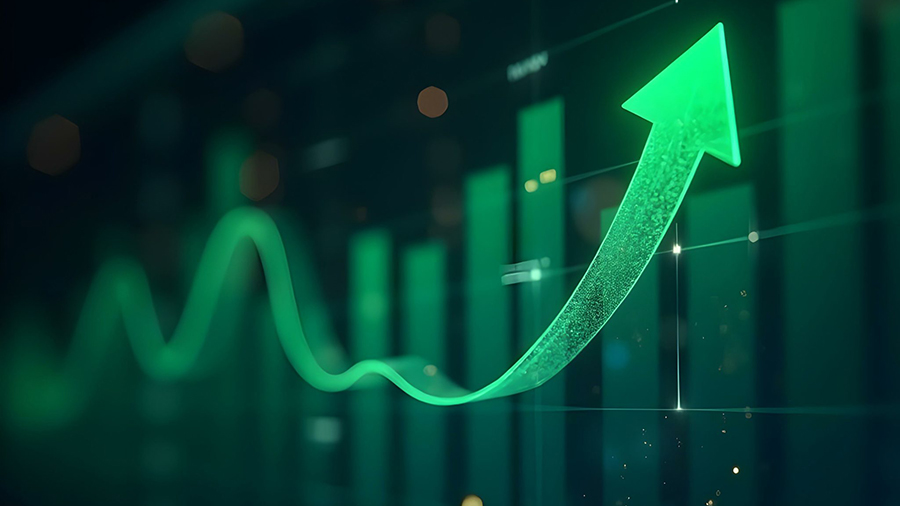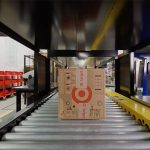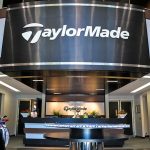In a very well received move just one week after first raising tariffs across the board, U.S. President Donald Trump either reminded the markets that he authored “The Art of the Deal” or awoke Wednesday to the reality that the U.S. bond and stock markets were going to drag down his legacy. Regardless, Wall Street sat up and listened as the markets surged on Wednesday afternoon.
Trump’s latest announcement that he is providing a 90-day stay on tariff increases – and moving the baseline tariff to 10 percent – for all countries that have come to the table to negotiate, was very well received. China was left out of the revised tariff table and also suffered an immediate increase in tariffs to 125 percent.
Mexico and Canada are not eligible on the new rates, except for goods covered under USMCA agreement. The 25 percent fentanyl and reciprocal tariffs will stay in place, as will the steel, aluminum and auto tariffs.
Trump first announced his tariff plans on April 2, a day he was calling “Liberation Day,” as he set out a range of tariffs that started at a 10 percent baseline and went up to 50 percent for those he said were the worst trade offenders. He left the door open for those that wanted to talk, or negotiate a revised deal on trade.
Trump is still claiming that China wants to do a deal, but said they don’t know how to go about it.
The latest news may be a sign that Treasury Secretary Scott Bessent has won Trump’s ear on the trade issue while Counselor to the President Peter Navarro lost in his effort to fight to the death on the tariff battle. Navarro’s bluster was not well received and his position that the issue was not about just tariffs and was instead an effort to reset the entire global trade landscape, lost out to Bessent’s clear understanding of the economy and what was needed to quell unrest on Wall Street and remove an issue for Democrats and the media to hammer the Trump Administration with the issue going forward.
“I think what a lot of people are missing here is that the levels that were put out last Wednesday are a ceiling – if you don’t retaliate,” Bessent noted.
Bessent was the one that met with the press outside the White House after Trump announced his decision on his Truth Social media site. He is suggesting that over 75 countries are on their way to DC to negotiate trade deals, with Vietnam expected on Wednesday.
“I am not planning on going anywhere for Easter,” Bessent told an audience of bankers in Washington, DC on Wednesday. “We have been overwhelmed with the response to come to DC and negotiate with President Trump.”
Trump said Wednesday that he thought that people were getting “a bit yippy” and said they were getting “queasy” when he saw the state of the bond market as rates continued to rise in sharp contrast to what was expected to happen.
Investor Steve Eisman, made famous by The Big Short book and movie after he predicted the 2008 global financial crisis, told The New York Post that he expected foreign governments to come “groveling” to President Donald Trump to end his tariff trade war. “The other countries in the world can yell and scream all they want, but when you’re going to sit down at that poker table, they don’t hold too many cards because they all need to sell stuff to the United States.”
Mohamed El Erian, chairman of the Under Armour Board of Directors, said on CNBC Wednesday afternoon that bringing manufacturing back to the U.S would take a long time. He also said the other question is whether it is desirable to to do so, given the type of jobs that would be created. He said the Administration had to make the decision whether it wanted to take the position he made if it was going to result in “a very bumpy road” ahead.
Bessent was obviously reading the tea leaves when he met with Trump on Sunday, April 6 to press his position. The former Wall Street finance guy downplayed talk of the U.S. economy falling into recession, which is defined as two consecutive quarters of negative growth.
He said the companies he has spoken with were telling him that the economy was still very solid.
“We got very good jobs numbers last Friday. I think that we are in pretty good shape,” he said.
The Dow Jones Industrial Average closed at over 40,000 on Wednesday, up 7.9 percent for the day, while the S&P 500 increased 9.5 percent to 5,457, and the Nasdaq jumped 12.1 percent for the day, its biggest day in its history.
Image under license with Adobe Stock
See below for additional SGB Media coverage of the tariff issues and negotiations:
EXEC: Trump Threatens to Push China Tariffs to 104 Percent Total
EXEC: Trump Tariffs Hit Active Lifestyle Stocks Hard; Vietnam Hit a Big Surprise
















